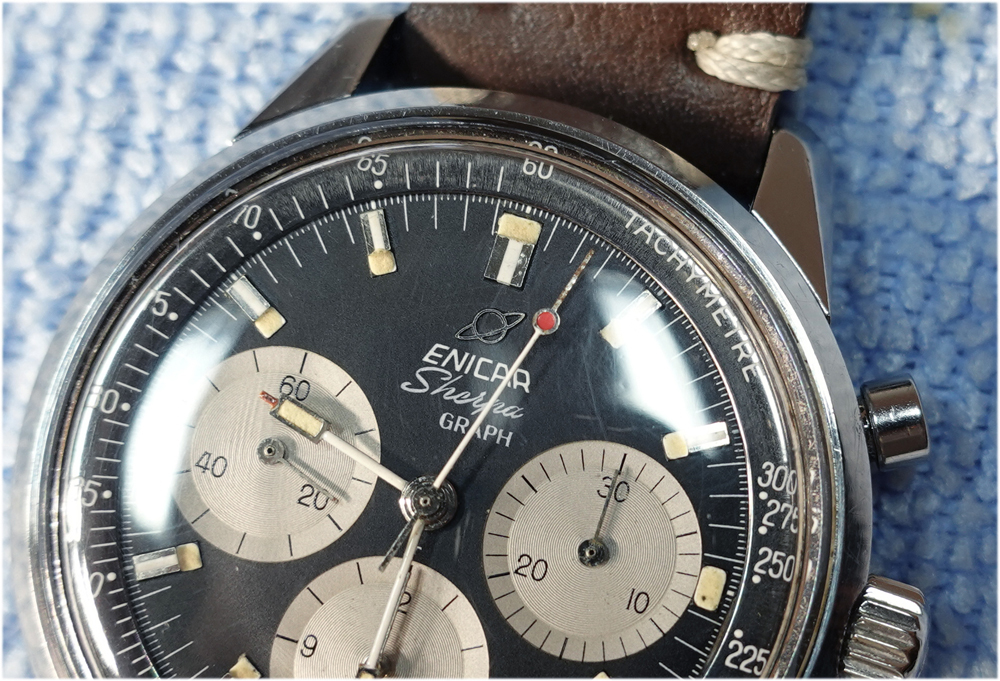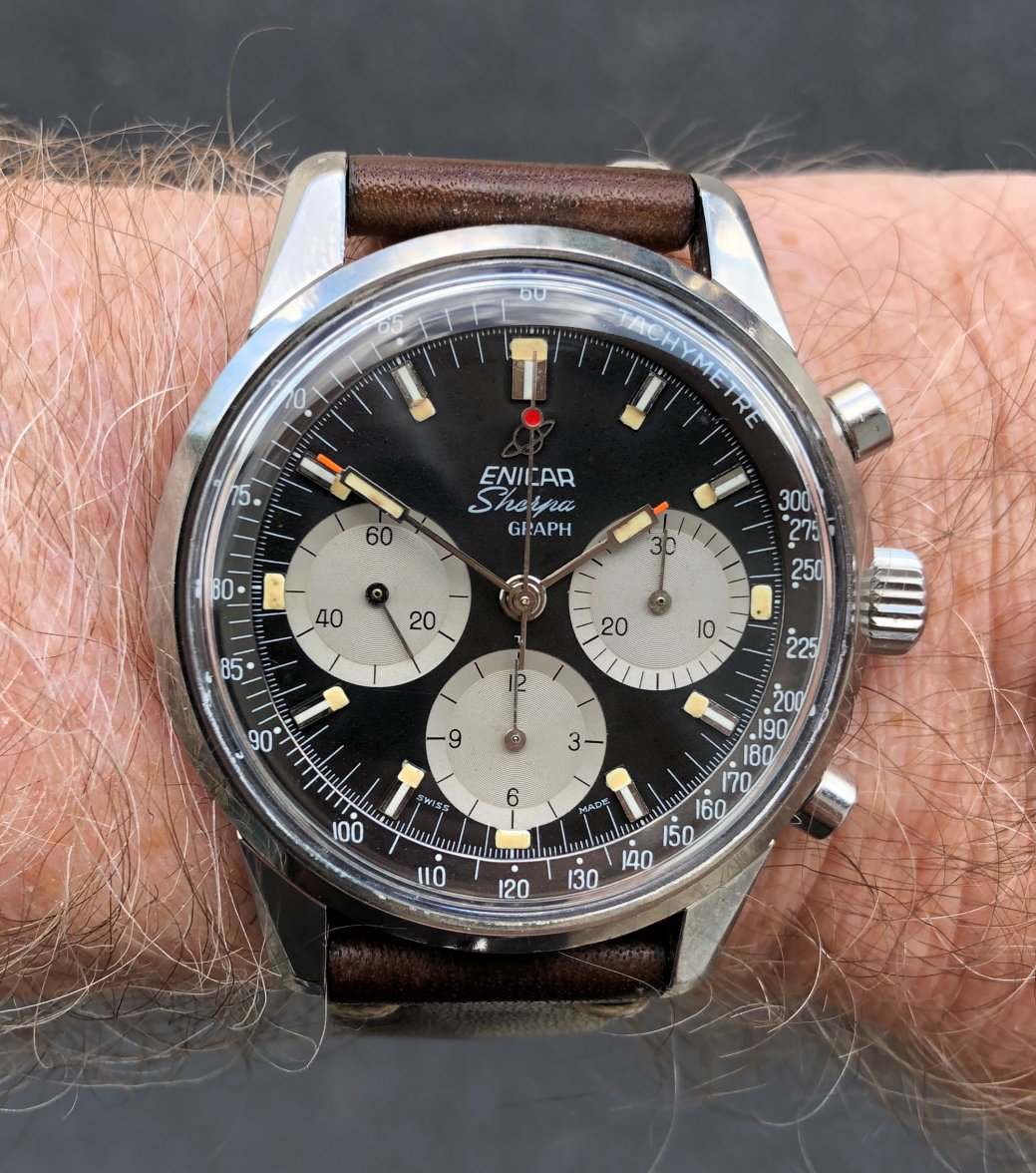Judging vintage black dials
STANDY
··schizophrenic pizza orderer and watch collectorInclude other vintage sources. Dealers, auctions, chrono24…….. Sorry, but just not convinced black dial vintage watches should raise some special alarm.
Black dial vintage watches are probably the number one watch to check for redialing.
50% of vintage black dialled watches sold on eBay, dealers or anywhere are probably redials.
$200 badly marked or bubbling dial watch, strip it down paint it black then $1000 sold to a newbie that has watched Madmen. We have seen this hundreds of times here over the years….There is well know sellers that live this business model and have for years.
Have been PMed by newbies about redialled black dials probably 7/10 watches for years…..
Shabbaz
·Sorry, but just not convinced black dial vintage watches should raise some special alarm.
Edit:
I thought you were a newcomer. But I can see you have a lot of watch experience. Strange that you say black dial omega's from the 50's and 60's dont need extra attention. I would say this is standard for the more experienced collectors.
Spruce
··Sunburst dial fanSo, what’s the percentage of watches described as ‘restored’ or ‘refurbished’ and those without any such mention?
Dgercp
·Apparently I am wrong about black dials! Will have to re-examine all of mine. Fortunately none bought off the bay.
Joe_A
·I don't accept the premise that, when a black dial is crisp and the hands have some indication of moisture damage, including perhaps rust bleeding into the luminous, when present . . . is either always or often an indication that the watch has - more likely than not - been redialed.
If the dial is the correct dial for the watch, one just can't know to a certainty.
I'll add that I used to think so until I experienced first hand a phenomenon that opened my mind to what I now feel is much more likely.
I've developed this argument in a couple of threads, but I feel it bears repeating.
I own an Enicar Sherpa Graph Mark III (12-66) that has a very clean dial, but at the time of purchase, the central hands had been painted because they had rusted.
At the time of the above photo, there were some scratches on the crystal that are not anywhere on the dial.
After a couple of years, I was able to obtain a set of NOS central hands and I had my watchmaker preserve the original set and install the new set. I was quite happy with the result!
I only took a couple photos during the week I had the watch back before new damage occurred. The photo above is a bit overexposed.
Within a week or so, I went in and out of a very cool air-conditioned building on a hot, humid summer day and suddenly, the watch had completely fogged up, just the one time. It has been over a year since, and there was only the one occasion of fogging up, but that is all it took for the central minutes and hours hands to begin to rust and to stain the new-old luminous.
Of course, one should be cautious in drawing broad conclusions from a single anecdote such as I have shared, but I'm now convinced that pristine dials and moisture-damaged hands are fairly common.
When I first bought the watch below, I thought perhaps that the dial had been replaced. Seen below, before and after having the central hands relumed:
Some will say REDIAL! but I feel certain that, odds are, "some" would likely be wrong.
Cheers,
Joe
If the dial is the correct dial for the watch, one just can't know to a certainty.
I'll add that I used to think so until I experienced first hand a phenomenon that opened my mind to what I now feel is much more likely.
I've developed this argument in a couple of threads, but I feel it bears repeating.
I own an Enicar Sherpa Graph Mark III (12-66) that has a very clean dial, but at the time of purchase, the central hands had been painted because they had rusted.
At the time of the above photo, there were some scratches on the crystal that are not anywhere on the dial.
After a couple of years, I was able to obtain a set of NOS central hands and I had my watchmaker preserve the original set and install the new set. I was quite happy with the result!
I only took a couple photos during the week I had the watch back before new damage occurred. The photo above is a bit overexposed.
Within a week or so, I went in and out of a very cool air-conditioned building on a hot, humid summer day and suddenly, the watch had completely fogged up, just the one time. It has been over a year since, and there was only the one occasion of fogging up, but that is all it took for the central minutes and hours hands to begin to rust and to stain the new-old luminous.
Of course, one should be cautious in drawing broad conclusions from a single anecdote such as I have shared, but I'm now convinced that pristine dials and moisture-damaged hands are fairly common.
When I first bought the watch below, I thought perhaps that the dial had been replaced. Seen below, before and after having the central hands relumed:
Some will say REDIAL! but I feel certain that, odds are, "some" would likely be wrong.
Cheers,
Joe
Edited:
philips
·I understand your feelings about black dials. I have seen a lot of refinished black dials. Definitely a bit of a minefield. If the dial is glossy and perfect and the movement shows age, like wear on rotor, you need to be skeptical. A 50 year-old dress watch that was worn a lot is going to show some aging on the dial, black or whatever color, in my opinion. Whether a redial is black or another color, the quality of the text is often a giveaway. Honestly, I'd rather have a watch with slight aging on the dial and know it's original, as opposed to a perfect dial, not knowing if it's a redial.




